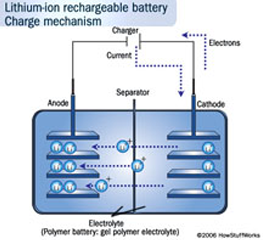Battery Industry
Lead-Acid batteries can be dated back to 1859, and today are seen in globally in residential, commerical, and industrial markets. Though today many new technologies exist to create batteries with better performance and longer life spans, roughly 100 million lead-acid batteries are produced globally each year. DTI provides systems to form lead-acid batteries at a high rate as well as testing systems to benchmark new types batteries that are intended for use in the Electric Vehicle market.
Battery production consists of several stages. Lead-acid batteries are first filled with acid before they are formed. Formation involves charging and discharging batteries with regulated currents over several hours. Voltage and temperature are also monitored, and each type of battery has a separate charging profile to maximize battery life span and discharge performance.
Battery technology

Lead-Acid Battery
The Lead-Acid Battery has been around for over a century, but its not going away anytime soon. Though many new battery technologies are being tested, it's hard to match the cost and surge rates of the lead-acid battery. Even as the market evolves, DTI is working with battery manufactures to be able to test new technologies coming into the market.
Lithium-Ion and other new technologies
Lithium-Ion has been getting a big push into the EV market. Many new facilities are being installed to produce these batteries in hopes that they will run hybrid and electric cars of the future. DTI's equipment makes it possible to thoroughly test these batteries in order to verify that these technologies have the capacity and life spans required by electric vehicles. Life Cycle equipment systematically charges and discharges cells in a lab and monitors voltages, currents, and temperatures. The data is then used to interpret battery performance and storage life.


Market
Lead-Acid Battery production consists of about 50% of all batteries manufacturing, a 50 billion dollar a year industry.
Lead Acid batteries are used in a very wide range of markets, and can are present in residential, commercial, and industrial equipment. The following is a list of industries and equipment that the market reaches.